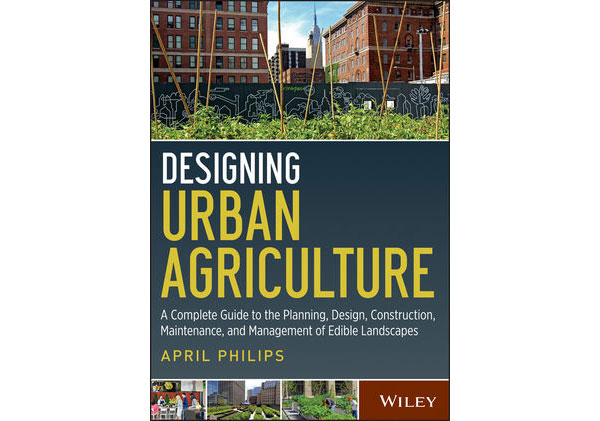
Author: April Philips (Wiley, 2013)
When I first opened Designing Urban Agriculture: A Complete Guide to the Planning, Design, Construction, Maintenance and Management of Edible Landscapes I felt like I was stepping into a plane of thought whose surface has been only recently scratched. I was thoroughly impressed with the case studies and real life examples of human beings choosing to make a difference in their urban community without the aid or guidance of a practicing professional. In fact, one of the most exciting stories within the book, was about a young girl named Gabby Scharlach, who decided in the sixth grade to champion a paper about growing an urban garden at her school. This sentiment is where the book wins its battles with the reader, but one of its weaknesses.
The book relies heavily on case studies for its own reference and reporting (sometimes to a fault) and Philips lays the book out accordingly. So, while the structure of the book seems straightforward, with chapters within focusing on a topic related to the process of urban agriculture—Food Cities: Ecology + Agriculture, Planning Strategies for Urban Food Systems, Vision, Synthesis, and Form, Systems Integration and Connections, Operations, and Outreach and Community, respectively—each ‘sub-section’ is quite unconventional, referring to pages where the reader can locate a corresponding case-study.
With this in mind, I found a quick scan through the table of contents somewhat misleading, insofar that it direct readers to what looks like “the answer”, when it is a bit more circuitous. Readers are asked to follow a series of diagrams and matrices the become a bit disorienting.
I am reminded of Jeff Speck’s Walkable City: How Downtown Can Save America, One Step At A Time where readers are taken through his steps to a walkable city, which were well thought out and organized in a clear and confident way. Unfortunately, despite Philips’ good intent, that it lacks to the overall cohesion that Speck’s book executed so well.
As Philips argues her points, she too follows Speck’s form of giving steps to success, but unlike the latter, does not actually dive into the steps as a means to successfully achieve her specific goal—in this case, urban agriculture. Instead, I felt as though I was reading succinct bullet points of information without a clear , logical reason why or any explanation of what to do with this information. This makes the book’s target audience difficult to define.
That being said, the case-studies were extremely interesting and the writing was very accessible. One can tell that Philips is passionate about the future of our farms and agriculture and is convincing in her convictions that people need to start understanding and implementing her processes. A slight transformation of the structural issues explained above would make the book that much more powerful.
So, while the book falls shy of being the Complete Guide to the Planning, Design, Construction, Maintenance, and Management of Edible Landscapes it advertises itself to be, it definitely leaves readers with a strong collection of really inspiring case-studies and succinct snippets of good information gathered from a variety of professionals. A good start for an important topic that is gathering momentum.
***
Jeremy Senko is happily lost in the world of theoretical architecture and design. He is forever a student at heart, consistently reading, experiencing and learning about the world he inhabits. More specifically, he recently completed his Bachelor of Interior Design at Kwantlen Polytechnic University, where he pushed the limits (and the patience) of his professors.


